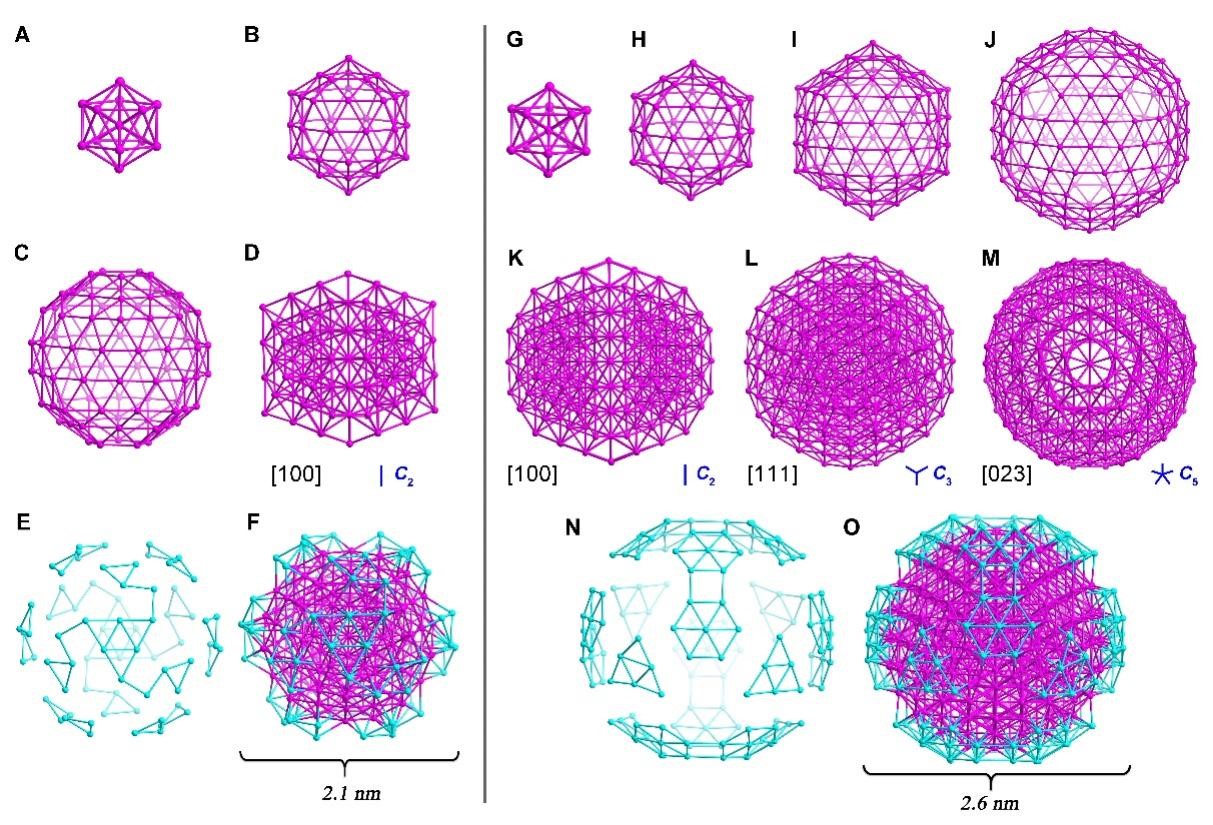Progress Achieved by Chinese Scientists in Deciphering Icosahedra Structural Evolution with Atomically Precise Silver Nanoclusters

Figure. Structural anatomy of multiply-layered icosahedral structures of Ag213 (left) and Ag429 (right) nanoclusters
Supported by the National Natural Science Foundation of China (Grant No. 92361301), a collaboration between the research teams led by Quan-Ming Wang at Tsinghua University and that of Gui-Jie Liang at Hubei University of Arts and Science has made an advance in the research of the structural evolution of icosahedral metal nanoclusters. The related research, titled “Deciphering icosahedra structural evolution with atomically precise silver nanoclusters”, was published online on August 28, 2025 in Science. Link to the paper: https://www.science.org/doi/10.1126/science.adx6639.
The control of metal nanoparticles (NPs) shapes is very important owing to their morphology-dependent properties. Understanding the evolution pathways of NPs is essential for controlling shapes and tailoring properties. NP synthesis typically involves three stages: the formation of nuclei, seeds, and nanocrystals. The mechanism of nucleation has been extensively studied, and the evolution from seeds to nanocrystals has been revealed by electron microscopy. However, it remains challenging to visualize the growth from nuclei to seeds owing to the small size of the evolving species. In addition, it is difficult to control the growth of multiply-twinned metal NPs remains challenging because of numerous competing pathways.
Icosahedral morphology is commonly found in many noble metal NPs. Its {111} faces, corners, and edges are responsible for many interesting electronic, optical, and catalytic effects. In this work, Wang et al. report two giant silver icosahedral nanoclusters, [Ag213(C≡CR1)96]5− and [Ag429Cl24(C≡CR2)150]5− (Ag213 and Ag429, R1 =3,4,5-F3C6H2 and R2 = 4-CF3C6H4), which were synthesized through ligand engineering and kinetic control. Single-crystal x-ray diffraction reveals that Ag213 and Ag429 have multilayered icosahedral Ag141 (Ag13@Ag42@Ag86) and Ag297 (Ag13@Ag42@Ag92@Ag150) cores, respectively. Notably, Ag429 with 260 valence electrons is the largest Ag0-containing nanocluster reported to date. These two giant silver nanoclusters are metallic in nature, as confirmed by their plasmonic absorption and pump-power–dependent excited-state dynamics. Their atomically precise structures support the layer-by-layer evolution from nuclei to seeds of silver icosahedra.
Contact Us

National Natural Science Foundation of China
Add: 83 Shuangqing Rd., Haidian District, Beijing, China
Postcode: 100085
Tel: 86-10-62327001
Fax: 86-10-62327004
E-mail: bic@nsfc.gov.cn
